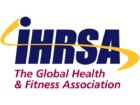Report Your Operation’s Financial Statements
To ensure uniformity, transparency, and comparability, report and present financial results and data according to GAAP (Generally Accepted Accounting Principles) for United States operators and IFRS (International Financial Reporting Standards) for international operators.
Keep Your Business Compliant
Follow all applicable national, state, regional, and local laws & regulations regarding employment, fees, taxes, licenses, and permits required for operation. Legal responsibilities will vary depending on location.
Monitor Financial Performance for Your Business
Consider the KPI’s (key performance indicators) appropriate to your operation. This will allow you to determine operational and financial achievements across your organization.
11 Accounting and Finance KPI’s to Consider Tracking at Your Business
Payroll percentage of revenue. Payroll should include salaries and wages, contract labor, payroll taxes, workers compensation (or equivalent, where relevant), insurance, and benefits.
EBITDA(R) percentage of revenue. This measures operational success. EBITDA and EBITDAR are comparable for facilities with rent and without.
Visits and attendance. Track average visits per customer per week, the percentage of customers visiting at least once per week, and the number of customers that haven’t visited in over 60 days.
Customers, clients, and members. Monitor daily unique customer visits and total customers.
Costs and revenue per visit. Track variable costs (hourly payroll and supplies) and variable revenues (food and beverage, spa services, personal training, and other programs) per visit. Stay engaged with business at hand and costs associated with it.
Attrition. To calculate your membership attrition rate, divide total dropped memberships for the 12 months by the 12-month average beginning memberships.
Calculate your current ratio. The Current Ratio is a liquidity measurement that helps gauge a company’s ability to pay debts due within the next year. A Current Ratio of 1.25 – 2+ is favorable showing enough liquidity to cover current liabilities plus more.
Working capital. Find working capital by subtracting current liabilities from current assets. The difference should be enough to cover an appropriate time of operating expenses.
Non-dues/membership revenue as a percentage of total revenue. (Revenue – Access Dues and Fees)/Total Revenue
Revenue per square foot or metre. You can find this by dividing revenue by square foot or metre of your facility.
Department-specific revenue. This indicates the percentage of total revenue.
For additional accounting and finance resources, please visit the links below. More best practice guidelines can be found here.

